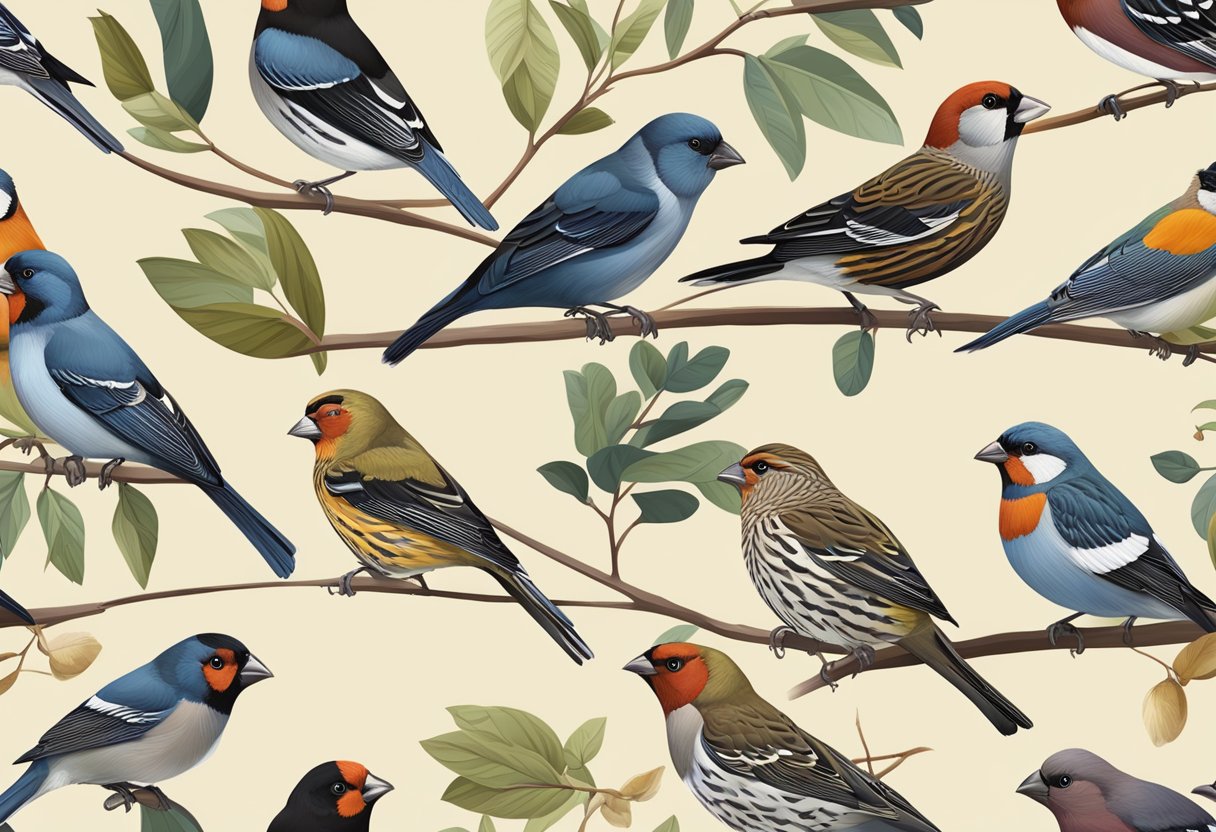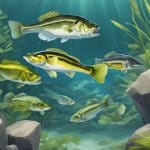Types Of Finches
Finches are a diverse group of birds that belong to the family Fringillidae. There are over 240 species of true finches, which include some grosbeaks, redpolls, and siskins. Despite their small size, finches are known for their beautiful plumage, distinctive songs, and varied foraging behaviors.
Finches are found all over the world, except for Australia and Antarctica. They inhabit a variety of habitats, including forests, grasslands, deserts, and tundras. Some species are migratory, while others are resident. Finches are also known for their unique physical characteristics, such as their compact bodies, conical bills, and short necks with large jaw muscles.
Overall, finches are fascinating birds that have captured the attention of bird enthusiasts and scientists alike. With their diverse range of species, physical characteristics, and behaviors, they offer a wealth of opportunities for study and appreciation.
Key Takeaways
- Finches are a diverse group of birds that belong to the family Fringillidae and are found all over the world, except for Australia and Antarctica.
- There are over 240 species of true finches, which include some grosbeaks, redpolls, and siskins, and they are known for their unique physical characteristics, such as their compact bodies, conical bills, and short necks with large jaw muscles.
- Finches inhabit a variety of habitats, including forests, grasslands, deserts, and tundras, and they offer a wealth of opportunities for study and appreciation.
Finch Species Overview

Finches are a diverse group of birds that belong to the family Fringillidae. They are known for their small size, beautiful plumage, and distinctive songs. There are many different species of finches, each with its own unique characteristics and habits.
Common Finch Species
Some of the most common finch species found in North America include the House Finch, American Goldfinch, and Purple Finch. The House Finch is a medium-sized songbird that is native to North America. It has a distinctive red head and breast, and a brownish-gray back and wings. The American Goldfinch is a small, brightly colored bird with a yellow body and black wings. The Purple Finch is a medium-sized bird with a reddish-purple head and breast, and brownish-gray back and wings.
Lesser-Known Finch Varieties
There are many lesser-known varieties of finches, such as the Cassin’s Finch, Brown-Capped Rosy-Finch, and Gray-Crowned Rosy-Finch. Cassin’s Finch is a medium-sized bird with a red crown, brown back and wings, and a pinkish-red breast. The Brown-Capped Rosy-Finch is a small bird with a brownish-gray back and wings, and a pinkish-red breast. The Gray-Crowned Rosy-Finch is a medium-sized bird with a gray crown, brownish-gray back and wings, and a pinkish-red breast.
Finches are fascinating birds that are beloved by birdwatchers and nature enthusiasts alike. Whether you’re a seasoned birder or a casual observer, there’s always something new to learn about these amazing creatures.
Physical Characteristics
Finches are small to medium-sized songbirds with stout, conical bills. They have a compact body, short neck, and large jaw muscles. Finches are known for their distinctive flight calls and pointed wings, which help them maneuver through the air.
Color Variations
Finches come in a variety of colors, depending on the species and gender. Male finches are often more brightly colored than females, with vibrant hues of yellow, black, gray, and red plumage. Females tend to have more subdued colors, with yellowish or brown feathers.
Size and Shape
Finches vary in size and shape, with some species being smaller than others. They typically range in size from 4 to 9 inches in length. Finches have a compact body with a short tail and conical bill. They also have relatively pointed wings and notched tails.
Overall, the physical characteristics of finches make them well-suited for their natural habitats. Their compact size and maneuverability allow them to navigate through dense vegetation, while their conical bills are adapted for cracking open seeds and nuts. Whether you are a bird enthusiast or simply enjoy observing nature, finches are a fascinating and beautiful species to study.
Habitat and Distribution
Finches are found all over the world, inhabiting a wide range of habitats, from grasslands to forests to alpine areas. In this section, we will discuss the different habitats and distributions of finches.
North American Habitats
In North America, finches can be found in a variety of habitats, including backyard feeders, forest edges, and grasslands. In Alaska and the northern United States, finches can be found in coniferous forests, while in southern Canada, they can be found in deciduous forests. Some species, such as the Evening Grosbeak, prefer the higher elevations of the Rocky Mountains.
Global Finch Habitats
Finches can be found on every continent except Antarctica. In Africa, they can be found in grasslands and cliffs, while in Europe, they are found in alpine areas. In South America, they inhabit the Andes Mountains and the Amazon rainforest. Some species, such as the Gouldian Finch, are found only in specific regions, such as the savannas of northern Australia.
Finches have adapted to their habitats in various ways. For example, some species have developed specialized beaks for cracking open seeds, while others have longer beaks for reaching nectar deep inside flowers. Additionally, some species have developed unique mating behaviors, such as elaborate courtship displays or building intricate nests.
Overall, the diverse habitat and distribution of finches make them a fascinating group of birds to observe and study.
Feeding and Diet
Finches are known for their diverse feeding habits. They have a preference for various types of seeds, fruits, and berries. However, their diet also changes depending on the season and availability of food.
Seed Preferences
Finches are seed eaters and have a particular preference for certain types of seeds. They enjoy seeds such as sunflower, thistle, and pine. These seeds are high in fat and provide the necessary energy for finches to stay warm during the winter months.
Bird feeders are an excellent way to provide finches with the seeds they enjoy. However, it is essential to clean the feeders regularly to prevent the spread of diseases.
Dietary Adaptations
Finches have adapted their diet to suit the changing seasons. During the summer months, they feed on grasses and seeds, especially black oil sunflower seeds. However, in the winter months, when food is scarce, they change their diet to include fruits, berries, and vegetables.
It is crucial to provide finches with a balanced diet to ensure they remain healthy. While seeds are an essential part of their diet, they should not be the only food source. Fresh produce and pelleted food should also be included in their diet.
In conclusion, finches have a diverse diet that changes depending on the season and availability of food. Providing them with a balanced diet that includes seeds, fresh produce, and pelleted food is essential for their health. Bird feeders are an excellent way to provide finches with the seeds they enjoy, but they should be cleaned regularly to prevent the spread of diseases.
Conservation and Challenges
Environmental Threats
Finches are facing various environmental threats that are putting their survival at risk. Habitat loss is one of the major threats to finches, as their natural habitats are being destroyed due to human activities such as deforestation and urbanization. This has led to a decline in the population of some species of finches such as Lawrence’s Goldfinch, which is found in the mountains of California.
Climate change is also a significant threat to finches. As temperatures rise, the availability of food and water sources for finches is affected, which can lead to a decline in their population. Predators such as cats and other animals also pose a threat to finches, especially during nesting season when they are vulnerable.
Conservation Efforts
Conservation efforts are being made to protect finches and their habitats. Laws have been put in place to protect the habitats of finches and prevent habitat loss. Organizations such as Audubon are working to protect birds and their habitats through various conservation programs.
Efforts are also being made to reduce the impact of climate change on finches. This includes reducing greenhouse gas emissions and promoting the use of renewable energy sources. Additionally, efforts are being made to control the population of predators that pose a threat to finches.
In conclusion, finches are facing significant environmental threats that are putting their survival at risk. However, conservation efforts are being made to protect them and their habitats. It is important to continue these efforts to ensure the survival of these beautiful birds.






